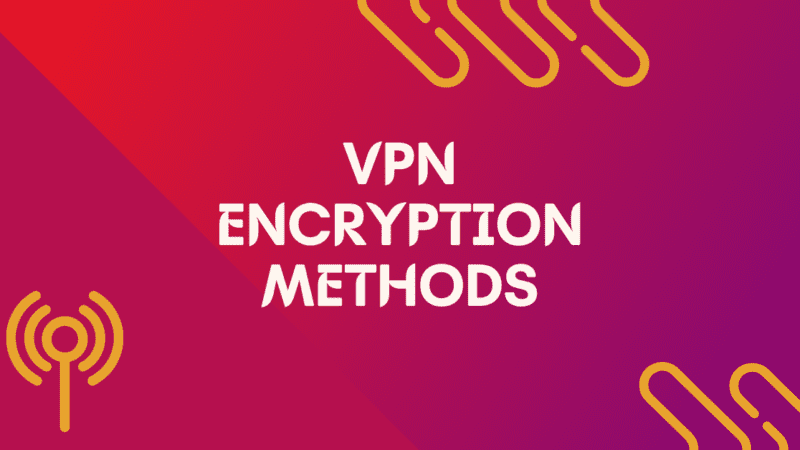6 Most Popular VPN Protocols You Should Consider While Choosing Best VPN

Virtual Private Network (VPN) has become an essential tool for internet users, especially those who are concerned about their online security and privacy. VPN protocols are the backbone of any VPN service, and they play a crucial role in encrypting and securing users’ data as it travels through the internet. With a wide range of VPN protocols available, it is important to understand their differences and how they work.
In this article, we will provide an overview of some of the most common VPN protocols and their strengths and weaknesses. By the end of this article, readers will have a better understanding of the various VPN protocols and be better equipped to choose the most suitable one for their needs.
6 Most Popular Types of VPN Protocols
1. PPTP
PPTP is one of the oldest and most widely used VPN protocols. It is compatible with a wide range of devices and operating systems. PPTP creates a secure tunnel between the user’s device and the VPN server by encapsulating the data within GRE (Generic Routing Encapsulation) packets. It uses MPPE (Microsoft Point-to-Point Encryption) to encrypt the data, which provides basic security for the data in transit.
Advantages of PPTP:
- PPTP is easy to set up and use.
- It is compatible with a wide range of devices and operating systems.
- It is fast and efficient, making it ideal for streaming and online gaming.
Disadvantages of PPTP:
- PPTP’s encryption is considered weak by modern standards, and it can be easily compromised.
- It has some known vulnerabilities, including MS-CHAPv2, which can be exploited by attackers to gain access to users’ data.
- PPTP has been largely deprecated by many VPN providers due to its security issues.
Security concerns with PPTP:
- PPTP’s encryption is vulnerable to brute force attacks, which can be used to decrypt the data in transit.
- It is susceptible to man-in-the-middle attacks, where an attacker intercepts and alters the data passing through the tunnel.
- The security vulnerabilities associated with PPTP make it unsuitable for use in situations where high levels of security are required.
2. L2TP/IPSec (Layer 2 Tunneling Protocol with Internet Protocol Security):
L2TP is another widely used VPN protocol that is often used in combination with IPSec for enhanced security. It provides a secure tunnel between the user’s device and the VPN server, similar to PPTP, but with stronger encryption and improved security features.
L2TP encapsulates the data within L2TP packets and uses IPSec to encrypt and authenticate the data. IPSec provides a suite of security protocols that can be used to secure the L2TP tunnel, including encryption algorithms such as AES (Advanced Encryption Standard), SHA (Secure Hash Algorithm), and Diffie-Hellman key exchange.
Advantages of L2TP/IPSec:
- L2TP/IPSec is more secure than PPTP, with stronger encryption and authentication mechanisms.
- It is compatible with a wide range of devices and operating systems.
- L2TP/IPSec is ideal for remote access VPNs, where users need to securely access a network from a remote location.
Disadvantages of L2TP/IPSec:
- L2TP/IPSec can be slower than other VPN protocols due to the added overhead of IPSec encryption.
- Some firewalls and network setups may block L2TP/IPSec traffic, making it difficult to use in certain situations.
Security concerns with L2TP/IPSec:
- While L2TP/IPSec is generally considered a secure VPN protocol, it has been known to have vulnerabilities in the past, such as the ability to intercept and decrypt L2TP packets.
3. SSTP (Secure Socket Tunneling Protocol):
SSTP is a VPN protocol developed by Microsoft and introduced in Windows Vista. It is designed to provide a secure tunnel between the user’s device and the VPN server using SSL/TLS encryption, which is the same encryption used by HTTPS websites. This makes it highly resistant to attacks, as SSL/TLS is widely used and well understood.
SSTP uses a single TCP port (TCP port 443) for both control and data traffic, making it highly compatible with firewalls and other network setups.
Advantages of SSTP:
- SSTP is highly secure, using SSL/TLS encryption to secure the tunnel.
- It is highly compatible with most network setups and firewalls.
- SSTP is easy to set up and use.
Disadvantages of SSTP:
- SSTP is not as widely supported as other VPN protocols, making it less commonly available.
- SSTP is only available on Windows operating systems.
Security concerns with SSTP:
- SSTP is generally considered a highly secure VPN protocol, with no known major vulnerabilities or attacks to date.
4. OpenVPN:
OpenVPN is an open-source VPN protocol that is widely considered to be the most secure VPN protocol available today. It uses a combination of encryption, authentication, and tunneling protocols to provide strong protection for users’ data. OpenVPN can be configured to use a range of encryption algorithms, including AES, Blowfish, and Camellia.
OpenVPN can run over both TCP and UDP protocols, giving it flexibility in terms of network setup and compatibility with firewalls. It also supports multiple authentication methods, including user/password, certificate-based, and two-factor authentication.
Advantages of OpenVPN:
- OpenVPN is highly secure, using a range of encryption algorithms and authentication methods.
- It is highly configurable, allowing users to customize the encryption and authentication settings to suit their needs.
- OpenVPN is highly compatible with a wide range of devices and operating systems.
Disadvantages of OpenVPN:
- OpenVPN can be more difficult to set up and configure than some other VPN protocols.
- OpenVPN may be slower than some other VPN protocols due to the added overhead of encryption.
Security concerns with OpenVPN:
- While OpenVPN is generally considered highly secure, it has had some vulnerabilities and attacks in the past, although these are relatively rare.
5. IKEv2/IPSec (Internet Key Exchange version 2 with Internet Protocol Security):
IKEv2/IPSec is a VPN protocol that combines the security of IPSec with the flexibility and mobility of IKEv2. IKEv2 is a key exchange protocol used to establish secure connections between two devices, while IPSec is used to encrypt and authenticate data.
IKEv2/IPSec is designed to be highly secure and efficient, with fast connection times and automatic reconnection in case of connection loss. It can be used on a wide range of devices and operating systems, including mobile devices.
Advantages of IKEv2/IPSec:
- IKEv2/IPSec is highly secure, using IPSec for encryption and authentication.
- It is designed for mobility and can handle changes in network connections without interrupting the VPN session.
- IKEv2/IPSec is fast and efficient, with fast connection times and automatic reconnection in case of connection loss.
Disadvantages of IKEv2/IPSec:
- IKEv2/IPSec may not be as widely supported as other VPN protocols, making it less commonly available.
- Some network setups and firewalls may block IKEv2/IPSec traffic.
Security concerns with IKEv2/IPSec:
- IKEv2/IPSec is generally considered highly secure, with no known major vulnerabilities or attacks to date.
6. WireGuard:
WireGuard is a relatively new VPN protocol that has gained popularity in recent years due to its simplicity, speed, and security. It is an open-source VPN protocol that is designed to be easy to set up and use, while also being highly secure.
WireGuard uses state-of-the-art cryptography to secure the VPN tunnel, including Curve25519 for key exchange, ChaCha20 for encryption, and Poly1305 for authentication. This makes it highly resistant to attacks and ensures the privacy of users’ data.
WireGuard is designed to be lightweight and efficient, with minimal overhead and fast connection times. It can be used on a wide range of devices and operating systems, including mobile devices.
Advantages of WireGuard:
- WireGuard is highly secure, using state-of-the-art cryptography for key exchange, encryption, and authentication.
- It is designed to be lightweight and efficient, with fast connection times and minimal overhead.
- WireGuard is easy to set up and use, with a simple and intuitive configuration process.
Disadvantages of WireGuard:
- WireGuard is a relatively new VPN protocol and may not be as widely supported as other protocols.
- Some network setups and firewalls may block WireGuard traffic.
Security concerns with WireGuard:
- WireGuard is generally considered highly secure, with no known major vulnerabilities or attacks to date.
Conclusion
Choosing the right VPN protocol is an important decision that can affect the security, performance, and compatibility of your VPN. In this article, we have covered some of the most common VPN protocols.
Each of these VPN protocols has its own advantages and disadvantages, and the best choice for you will depend on your specific needs and preferences. Some protocols may be more secure, while others may be faster or more compatible with a wider range of devices and operating systems. By understanding the strengths and weaknesses of each protocol, you can make an informed decision that meets your specific needs and provides the level of protection and privacy you require.






